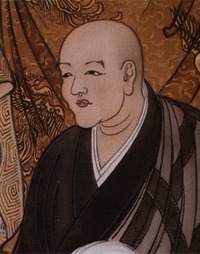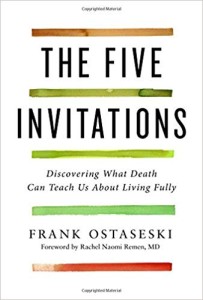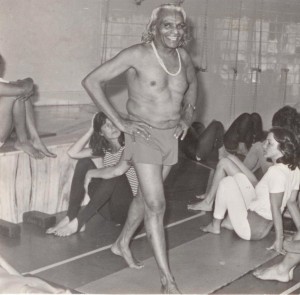 I was hoping he would make it to today and beyond. Surpassing his guru/brother-in-law Krishnamacharya in time spent on our planet would have pleased him no end, but 95 plus years would have to do. Happy 100, B.K.S. Iyengar, wherever in the cosmos you may be!
I was hoping he would make it to today and beyond. Surpassing his guru/brother-in-law Krishnamacharya in time spent on our planet would have pleased him no end, but 95 plus years would have to do. Happy 100, B.K.S. Iyengar, wherever in the cosmos you may be!
I was blessed to have been able to not only study with him, but to have a deeply personal/cosmic connection that existed on a multiplicity of planes. Relationships with spiritual teachers are always simultaneously simple and complex. Simplicity is the common ‘Ground of Being’ where you meet as fellow humans in love and mutual respect. Complexity is the interaction of the personal karma you both bring to the table that is rarely clear but always educational.
B.K.S Iyengar defies categorizing. Sui generis all the way. His fiery genius has spawned a world wide following in exploring embodied spiritual wisdom. His deep insecurities, stemming I am sure from a very challenging and often abusive childhood, kept getting in the way of his finding a lasting deep inner peace. But that edge fueled his relentless desire to explore. Genius often carries that paradox. Navigating his energy field was challenging for me, and my own personal spiritual growth eventually required me to step back from the unresolved shadows of the community arising around him. But he gave me three great gifts, unsurpassable spiritual treasures, that remain with me moment to moment and nurture me.
The first gift was how to practice. Within the first few days of my meeting him in Pune in January of 1982, he came up to me while I was struggling in trikonasana. He puts his foot directly toes to toes with mine and says ” why is this skin pink and this skin white? Why is 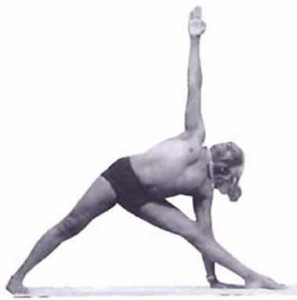 this turning in, but this out? He was asking me to feel, directly in the moment, what was arising. There was no ‘right or wrong’ action. Just, are you fully present? Of course I was trying to ‘think’ my way into the answers and was totally flummoxed, but he was amazingly patient.
this turning in, but this out? He was asking me to feel, directly in the moment, what was arising. There was no ‘right or wrong’ action. Just, are you fully present? Of course I was trying to ‘think’ my way into the answers and was totally flummoxed, but he was amazingly patient.
The second gift was validating my own practice. This was a real gift as he told his assistants to ‘leave me alone’ during the classes in Pune. There were often a handful of Iyengar wannabes roaming the classes looking to ‘adjust’ students so they would get the ‘right’ pose, but he kept them away from me. My body is quirky and he let me explore his teachings without outside interference. That was huge for me.
The third gift was the heart to heart connection that came outside of the classroom setting. In the previous post, we looked at the Brahma Viharas, the profoundly healing and heart opening practices passed down from Vedic times, of great importance to the Buddhists and yogis as well. As an example of ‘it is always the present moment, this reminds me of one of the more extraordinary moments in our complicated relationship. In the summer of 1987, the second Iyengar National convention was to be held in Cambridge MA. As the president of the BKSIYANC, the sponsors of the 1984 convention in San Francisco, I was asked by Patricia Walden, one of the local organizers, to address the teachers gathering the evening before the official opening. I was to speak just before Iyengar who would say some words to complete the evening.
For the previous months I had been studying and working with the Brahma Viharas as I 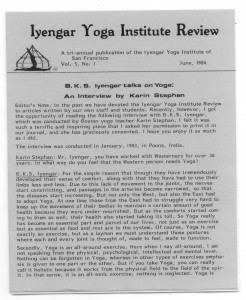 was writing an article on them for the Iyengar Yoga Institute Review, our tri-annual journal published in San Francisco. I was clear that the message of ‘citta prasadana’ , Patanjali’s description in I-33 of the result of practicing the Brahma Viharas, was of great importance to the yoga community, as some stresses and strains had appeared over the three previous years since the first convention in 1984. I had it all planned in my head, as I didn’t use notes.
was writing an article on them for the Iyengar Yoga Institute Review, our tri-annual journal published in San Francisco. I was clear that the message of ‘citta prasadana’ , Patanjali’s description in I-33 of the result of practicing the Brahma Viharas, was of great importance to the yoga community, as some stresses and strains had appeared over the three previous years since the first convention in 1984. I had it all planned in my head, as I didn’t use notes.
When the time came to speak, I got somehow became sidetracked by something, or many things and just as I was finishing I realized that I had totally spaced out and forgot all about Patanjali and Sutra I-33. It was so disappointing, but all in my head, or so I thought.
B.K.S is next and as he comes up to the microphone, he looks right in my eyes. He then addresses the group: ” I had prepared to say some words to you tonight, but something has just come to me now so I will change.” And he then proceeds to base his whole talk on sutra I-33, explaining the Brahma Viharas and their importance. It was a serious OMG moment for me.I not mentioned my topic to anyone, but he somehow he tuned into me and the whole field and joined me in the teaching. The heart to heart, being truly ‘seen’ and validated by your teacher, on the spiritual plane, in the moment, was a gift that keeps giving.
One of the many aspects of Iyengar that I truly loved was his total lack of pretension. He did not pretend to be holy, or above the messiness of the human condition. If he was in a bad mood, everyone could feel it. He could be embarrassingly obnoxious when his anger 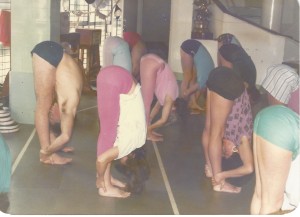 got the better of him, and in a split second switch to being overwhelmingly generous and loving. He also had a great sense of humor. There was the time in Pune when he came up to me while we (the class) were in uttanasana. He bends down and sort of whispers to me “do you mind if I use you to make a joke?”. Caught a bit by surprise, I said of course. He stops the class and has everyone come over to watch me and my hamstrings. “Look at this man. He is a mule.” He then proceeds to adjust here, slap there, touch here. Energy moves and the pose changes. “See now? This man was a mule and now I have turned him into a racehorse.” And then he starts giggling.
got the better of him, and in a split second switch to being overwhelmingly generous and loving. He also had a great sense of humor. There was the time in Pune when he came up to me while we (the class) were in uttanasana. He bends down and sort of whispers to me “do you mind if I use you to make a joke?”. Caught a bit by surprise, I said of course. He stops the class and has everyone come over to watch me and my hamstrings. “Look at this man. He is a mule.” He then proceeds to adjust here, slap there, touch here. Energy moves and the pose changes. “See now? This man was a mule and now I have turned him into a racehorse.” And then he starts giggling.
I’m still a mule, but one very grateful for having been blessed by his presence. Happy Birthday B.K.S!!! See you on the cosmic planes.
Also a Happy Birthday shout out to my son, S.B.K., Sean Bishop Kilmurray, turning 22 today.


